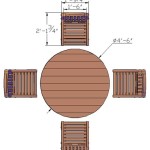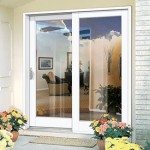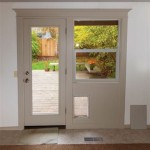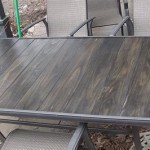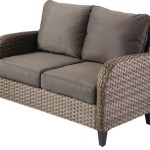Cost to Replace Patio Door Rollers: A Comprehensive Guide
Patio doors, also known as sliding glass doors, offer a seamless transition between indoor and outdoor spaces, providing natural light and enhanced accessibility. However, the frequent use of these doors can lead to wear and tear, particularly on the rollers responsible for their smooth operation. When patio door rollers begin to fail, they can make opening and closing the door difficult, noisy, and potentially damaging to the track and surrounding frame. Understanding the cost associated with replacing these rollers is crucial for homeowners to budget effectively and maintain the functionality of their patio doors.
The cost to replace patio door rollers varies depending on several factors, including the type of rollers, the complexity of the installation, and the geographic location. This article will delve into the different aspects that contribute to the overall cost, providing a detailed overview to help homeowners make informed decisions about patio door repair and maintenance.
Factors Influencing the Cost of Patio Door Roller Replacement
Several elements determine the final expense of replacing patio door rollers. These include the type of rollers needed, the labor involved in performing the repair, and any additional associated costs.
1. Type of Rollers: Patio door rollers are not one-size-fits-all. They come in various materials, sizes, and designs, each suited for different door weights, track designs, and operational requirements. Cheaper rollers, often made of nylon or plastic, tend to be less durable and have a shorter lifespan, resulting in a lower initial cost but potentially higher long-term expenses due to more frequent replacements. High-quality rollers constructed from stainless steel or with sealed bearings are more expensive upfront but provide smoother operation, increased longevity, and better resistance to corrosion. The specific type of roller required will depend on the make and model of the patio door, and selecting the correct replacement is crucial for optimal performance.
2. Labor Costs: The labor cost associated with replacing patio door rollers can vary significantly based on the complexity of the job and the hourly rate of the technician or contractor. A simple roller replacement on a readily accessible track may take less than an hour, resulting in a lower labor charge. However, if the door is difficult to remove, the track is damaged, or the rollers are deeply embedded in the door frame, the labor time can increase substantially. Some doors require specialized tools or techniques to access and replace the rollers, further increasing labor costs. Licensed and insured contractors typically charge higher rates than independent handymen due to their expertise, insurance coverage, and overhead expenses. However, hiring a qualified professional ensures the job is done correctly, minimizing the risk of future problems and potential damage to the door or frame.
3. Additional Costs: Beyond the price of the rollers and the labor charge, there may be additional costs associated with the repair. These could include travel fees if the technician is required to travel a long distance, diagnostic fees for assessing the problem, and the cost of any necessary hardware, such as screws, bolts, or track lubricants. If the track is damaged beyond repair, it may need to be replaced, adding significantly to the overall cost. Similarly, if the door frame is warped or damaged, it may require repair or replacement to ensure proper roller alignment and smooth operation. In some cases, homeowners may choose to upgrade to higher-quality rollers or replace all the rollers simultaneously, even if only one is failing, to ensure consistent performance and reduce the likelihood of future problems. These additional expenses should be factored into the overall budget for patio door roller replacement.
Typical Cost Breakdown
To provide a clearer understanding of the expected cost, it is helpful to break down the expenses involved in patio door roller replacement. This breakdown considers the cost of materials, labor, and potential additional expenses.
1. Materials Cost: The cost of the rollers themselves can range from a few dollars to several dollars per roller, depending on the material, design, and brand. Basic nylon or plastic rollers may cost between $5 and $15 each, while higher-quality stainless steel rollers with sealed bearings can cost between $20 and $50 each. Considering that most patio doors have two or more rollers, the total materials cost can range from $10 to $200 or more, depending on the quality and quantity of rollers needed.
2. Labor Cost: The hourly rate for a handyman or contractor to replace patio door rollers typically ranges from $50 to $150 per hour, depending on their experience, location, and the complexity of the job. A simple roller replacement may take less than an hour, resulting in a labor cost of $50 to $150. However, more complex jobs that require removing the door, repairing the track, or dealing with rusted or damaged hardware can take several hours, increasing the labor cost to $200 to $500 or more. It is essential to obtain multiple quotes from different contractors to compare prices and ensure a fair and competitive rate.
3. Total Cost: Combining the materials cost and labor cost, the total cost to replace patio door rollers can range from $60 to $700 or more. A simple replacement with inexpensive rollers may cost as little as $60 to $200, while a more complex job involving high-quality rollers, track repair, and extensive labor can cost $300 to $700 or more. It is important to note that these are just estimates, and the actual cost may vary depending on the specific circumstances of the repair.
DIY vs. Professional Installation
Homeowners often consider whether to replace patio door rollers themselves or hire a professional. Both options have advantages and disadvantages, and the best choice depends on the homeowner's skills, experience, and comfort level.
1. DIY Roller Replacement: Replacing patio door rollers is a relatively straightforward task for homeowners with basic mechanical skills and experience with home repairs. The DIY approach can save money on labor costs and provide a sense of accomplishment. However, it also requires purchasing the necessary tools, such as screwdrivers, pliers, and potentially specialized tools for removing and installing rollers. It also necessitates careful attention to detail and adherence to safety precautions to avoid injury or damage to the door or frame. If the homeowner is unfamiliar with patio door mechanics or lacks the necessary tools or skills, the DIY approach may not be the best option.
2. Professional Installation: Hiring a professional contractor or handyman to replace patio door rollers ensures the job is done correctly and efficiently. Professionals have the experience, tools, and expertise to diagnose the problem, select the appropriate rollers, and perform the repair safely and effectively. They also provide a warranty on their work, offering peace of mind and protection against future problems. While professional installation is more expensive than the DIY approach, it can save time, hassle, and potential headaches, especially for homeowners who lack the necessary skills or experience. Professional installation is often the best choice for complex repairs, damaged tracks, or doors that are difficult to remove or access.
To determine the best course of action, assess your comfort level with home repairs, the complexity of the job, and the potential risks involved. If you are confident in your abilities and the repair is relatively simple, the DIY approach may be a cost-effective option. However, if you are unsure about any aspect of the repair or if the job is complex or potentially dangerous, hiring a professional is the safer and more reliable choice.
Factors Affecting Long-Term Costs
Beyond the initial cost of roller replacement, several factors can influence the long-term expenses associated with patio door maintenance and repair. These include the quality of the replacement rollers, the frequency of use, and the environmental conditions.
1. Roller Quality: As previously mentioned, the quality of the replacement rollers plays a significant role in their longevity and performance. Investing in high-quality rollers with sealed bearings and durable materials can extend their lifespan, reduce the frequency of replacements, and minimize the need for future repairs. While higher-quality rollers may cost more upfront, they can save money in the long run by reducing maintenance costs and preventing premature failures.
2. Frequency of Use: The frequency with which the patio door is used directly impacts the wear and tear on the rollers. Doors that are used multiple times a day will experience more wear than doors that are used only occasionally. Regular maintenance, such as lubricating the rollers and track, can help to reduce friction and extend their lifespan, regardless of usage frequency.
3. Environmental Conditions: Exposure to harsh environmental conditions, such as saltwater, humidity, and extreme temperatures, can accelerate the deterioration of patio door rollers. Saltwater can cause corrosion, humidity can promote rust, and extreme temperatures can cause expansion and contraction, all of which can damage the rollers and tracks. Homeowners in coastal areas or regions with harsh climates should consider using rollers made from corrosion-resistant materials, such as stainless steel, and implementing regular maintenance practices to protect their patio doors from environmental damage.
Regular cleaning of the track and rollers is also crucial for preventing debris buildup and maintaining smooth operation. Vacuuming or brushing the track to remove dirt, leaves, and other debris can reduce friction and prevent the rollers from sticking or binding. Applying a lubricant specifically designed for patio door rollers can further enhance their performance and extend their lifespan. By addressing these factors, homeowners can minimize long-term costs and ensure the smooth and reliable operation of their patio doors for years to come.

81 249 Glass Door Roller Assembly Fits Pella Swisco Com

81 244 Sliding Glass Door Roller Pella Swisco Com

Sliding Door Repair Cost What Is The Process Of

Sliding Patio Door Roller Assemblies At Com

Sliding Door Wheels Rollers Repair 877 299 9179 24hr

Replacement Pella Sliding Patio Door Roller W Fits New Style P 4998 Flr

Sliding Patio Door Roller Assemblies At Com

Sliding Patio Doors Wheels Rollers Tracks Ambassador Window Repairs

How To Replace Sliding Glass Door Rollers Doctor

How Much Does It Cost To Replace Rollers On A Sliding Glass Door We Fix Doors
Related Posts

